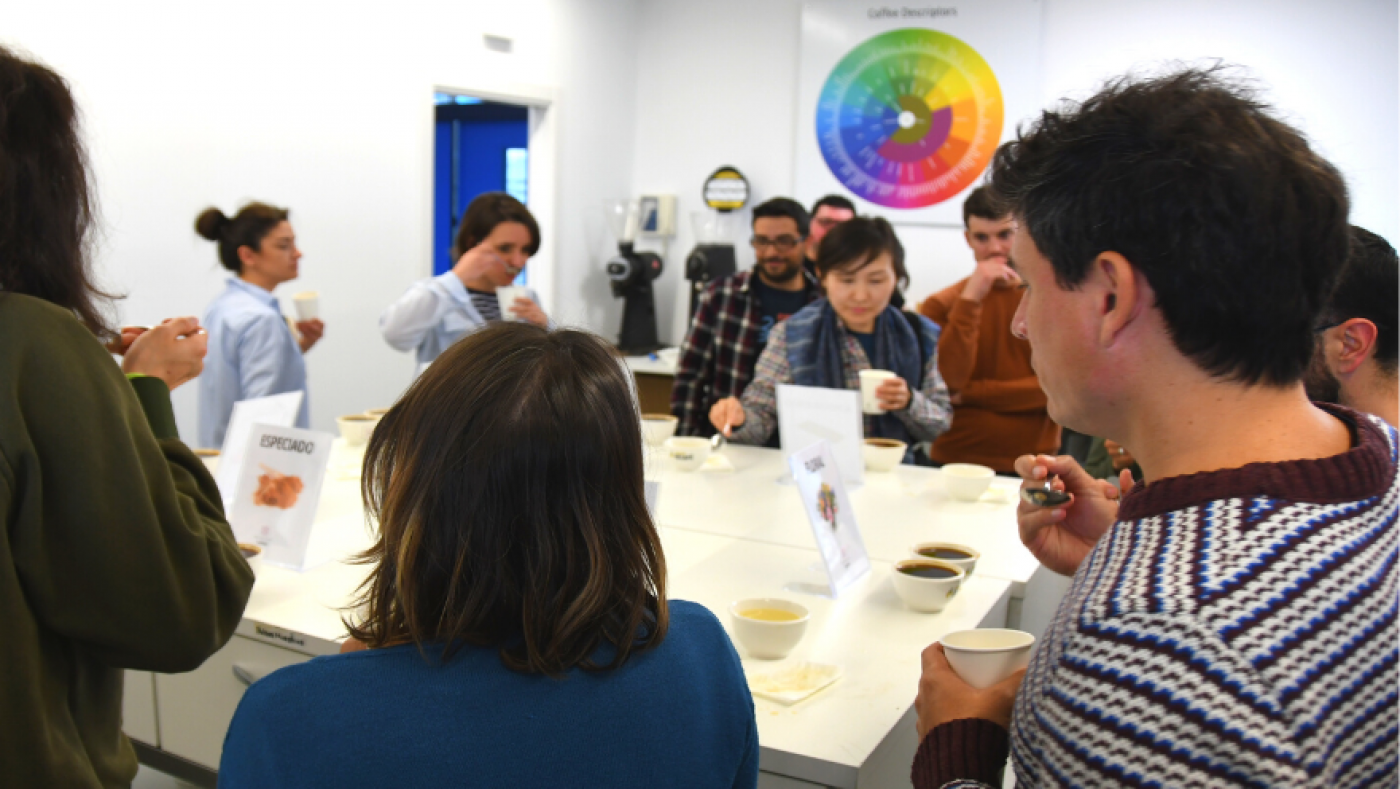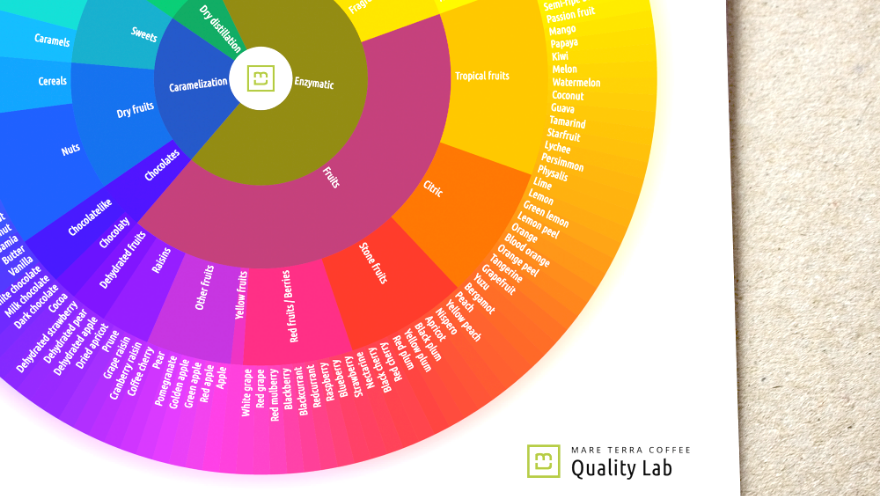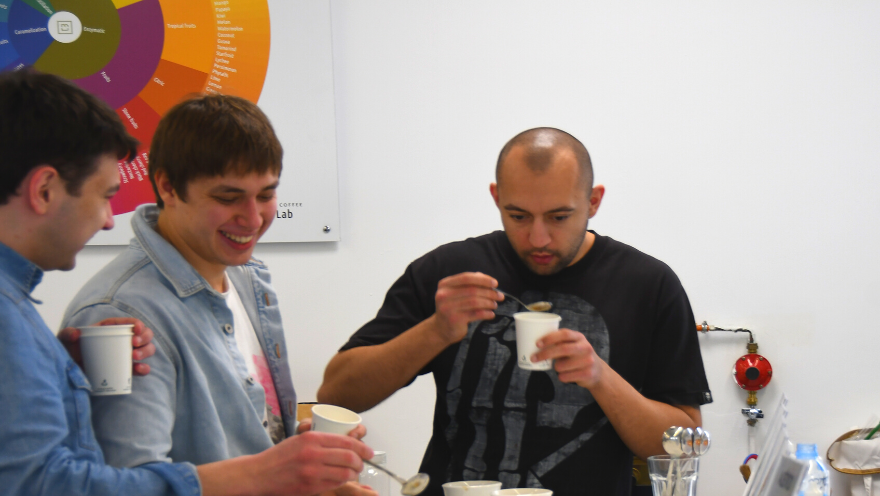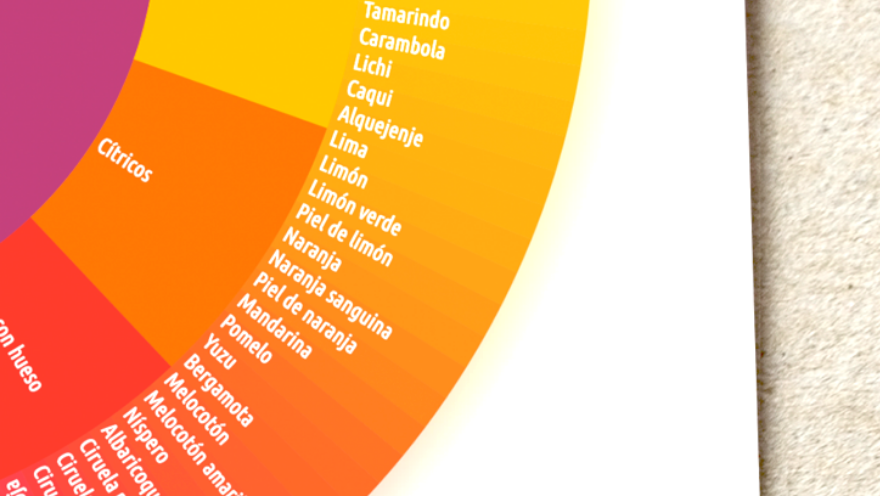
How does the coffee descriptor wheel work?
The descriptor wheel is a fundamental tool for the person evaluating a coffee through sensory evaluation or tasting, whether it is a professional or those who are just starting out in the coffee world. It is during this practice that the cupper, through tasting and smell, determines and assesses each of the characteristics that define a coffee.
The cupper is able to identify unique characteristics and descriptors in the coffee, but sometimes these olfactory sensations are complex and difficult to catalogue. That is why the aim of the descriptor wheel is to serve as an aid, a complement and a tool to support the sensory memory in the description of a coffee.
Using the SCA flavour wheel, with the aim to tweak and improve it, we tried giving it an even greater descriptive capacity, and each aromatic group has been expanded and developed until the final descriptor is reached. The wheel has therefore been subdivided into 4 circles, in which is possible to differentiate the more general groups to increasingly more specific categories, from the centre to the rim.

How should I read it?
For a correct use of the descriptor wheel, it must be read from the centre outwards. You will find that 145 of the most most common positive descriptors usually found in coffee are divided into three basic groups of olfactory/gustatory sensations: enzymatic, caramelization and dry distillation.
-
Enzymatic. Those compounds that are mainly the result of the enzymatic reactions that the bean has undergone while it was still a living organism, such as herbal, floral or fruity aromas.
-
Caramelization. They are the result of the caramelization of the sugars that occur during the roasting process, here we find chocolates, candies and sugars.
-
Dry distillation. They are the result of those higher roasting processes, although they are also characteristic of certain origins.
How do the groups differ?
Each jump from one circle to another means growing in specificity. As you move away from the centre of the wheel and move to the outermost circles, the aromatic group to which the coffee belongs becomes more defined and detailed, until you reach the final descriptor, which is the most detailed and comprehensive set.
These are all positive descriptors, as we understand coffees at this stage have already gone through several steps of selection. In addition, the wheel is updated and can be updated even further to include new sets of notes that are find through new types of processing techniques.

Moving through the wheel
Moving fruther from the first circle and the centre of the wheel, you'll find 9 different sub groups, and with them more precision in describing sensations.
The enzymatic group is divided into Fruits, Fragrances, Alcohols, Fermentation and Vegetables sub groups; the dry distillation group is divided into two different Spices groups, and the caramelisation group is subdivided into Sweets, Nuts and Chocolates.
The move from the second circle to the third corresponds to a further advancement into more detailed olfactory and taste sensations.t
The nine subgroups mentioned above are then divided into up to 24 categories, and these are then divided from the third to the fourth circle in the final descriptors.

Reading can also be made in reverse, that is to say starting from the circle furthest from the centre. If you are already sure about the key descriptor, but not about the group to which it belongs, this can help to determine whether a coffee is more enzymatic or more chocolatey for example, or to know which family of fruits it belongs to, as an exercise.
The wheel was built for an easy and intuitive sensory evaluation, in a way that not only the sensory memory is used, but as a resort to complement in maximum detail the uniqueness of each coffee.
It is a tool to have a common language among the whole coffee chain when describing the profiles of greatly prepared coffees, especially from roasters to baristas and consumers of good coffee.

